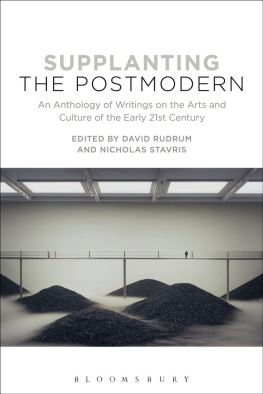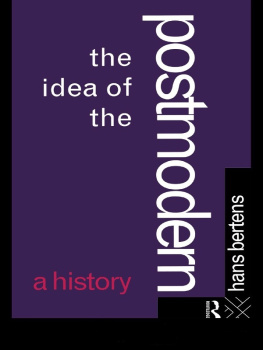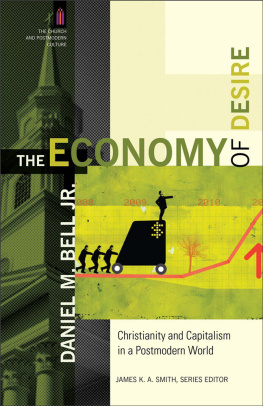For Alice
and
for Suzy

Contents
Linda Hutcheon
Ihab Hassan
Steven Connor
Alan Kirby
John McGowan
Jeffrey T. Nealon
Billy Childish and Charles Thomson
Billy Childish and Charles Thomson
Raoul Eshelman
Raoul Eshelman
Gilles Lipovetsky
Robert Samuels
Josh Toth and Neil Brooks
Josh Toth
Nicolas Bourriaud
Nicolas Bourriaud
Alan Kirby
Timotheus Vermeulen and Robin van den Akker
David Rudrum
Nicholas Stavris
First and foremost, our thanks go to Haaris Naqvi and Mary Al-Sayed at Bloomsbury for taking on this project and helping us see it through to completion. We would also like to thank Robert Eaglestone for his initial encouragement and enthusiasm for the idea of such a book, which persuaded us that this was a project worth undertaking.
Much of the funding that made it possible to pay for permission to reprint many of the writings anthologised herein came from the generous research budget of the School of Music, Humanities and Media at the University of Huddersfield. We are particularly grateful for this financial support, as without it we would have had to settle for a much less ambitious anthology.
We acknowledge with due thanks the respective publishers for permission to reprint the following writings:
Epilogue: The Postmodern in Retrospect from Linda Hutcheon, The Politics of Postmodernism, 2nd edition, Copyright 2002, Routledge. Reproduced by permission of Taylor & Francis Books UK.
Beyond Postmodernism: Toward an Aesthetic of Trust by Ihab Hassan, from Beyond Postmodernism: Reassessments in Literature, Theory, and Culture, ed. Klaus Stierstorfer, Copyright 2003, Walter de Gruyter. Reproduced with permission.
Auto-Modernity after Postmodernism: Autonomy and Automation in Culture, Technology, and Education by Robert Samuels, from McPherson, Tara, ed., Digital Youth, Innovation, and the Unexpected, pp. 21940, 2008 Massachusetts Institute of Technology, by permission of The MIT Press.
Material from Post-Postmodernism: or, The Cultural Logic of Just-In-Time Capitalism by Jeffrey T. Nealon, Copyright 2012, the Board of Trustees of the Leland Stanford Jr. University. All rights reserved. Used with the permission of Stanford University Press: http://www.sup.org
Material from Performatism, or the End of Postmodernism by Raoul Eshelman, Copyright 2008, Davies Group. Reproduced with permission, all rights reserved.
Material from Hypermodern Times, by Gilles Lipovetsky, trans. Andrew Brown, Copyright 2005, Polity. Reproduced with permission. This book was first published by Grasset in 2004 under the title Les Temps Hypermodernes, and we are particularly grateful to Ellen MacDonald-Kramer of Polity for securing the permission of the original publisher.
Material from The Passing of Postmodernism: A Spectroanalysis of the Contemporary, by Josh Toth, reprinted by permission from the State University of New York Press, 2010, State University of New York. All rights reserved.
Material from Postmodernism: What Moment? ed. Pelagia Goulimari, Copyright 2007 Manchester University Press. Reproduced with permission.
Material from Digimodernism: How New Technologies Dismantle the Postmodern and Reconfigure our Culture Alan Kirby, 2009, and Continuum US, an imprint of Bloomsbury Publishing Inc. Reproduced with permission.
Altermodern Manifesto and material from Altermodern, by Nicolas Bourriaud, Tate 2009, reproduced by permission of Tate Trustees.
Notes on Metamodernism by Timotheus Vermeulen and Robin van den Akker, from Journal of Aesthetics and Culture, Vol. 2, 2010, is reproduced here thanks to the commendable open access policy of that journal. We regret that it was not possible to include the many images that accompanied the original article, nor the abstract with which it began. For the terms of creative commons license governing further use of this text, see http://creativecommons.org/licenses/by/4.0/
Introduction: A Wake and Renewed? by Neil Brooks and Josh Toth, republished with permission of Rodopi, from The Mourning After: Attending the Wake of Postmodernism, eds. Neil Brooks and Josh Toth, 2007; permission conveyed through Copyright Clearance Center, Inc.
We are personally grateful to Vlad Strukov for his kind permission to reprint Steven Connors Postmodernism Grown Old. This chapter was originally published in Maria Popova and Vlad Strukov (eds.) Cultura Post: on the Crossroads of Culture and Civilization, Voronezh, Voronezh UP, 2004, pp. 5573.
We are similarly indebted to Alan Kirby for his permission to reprint his article The Death of Postmodernism and Beyond, from Philosophy Now, Issue 58, November/December 2006.
We thank Charles Thomson and Billy Childish for permission to reprint The Stuckist Manifesto and Remodernism. Both are available at http://www.stuckism.com, and in in The Stuckists: The First Remodernist Art Group, ed. Katherine Evans (London: Victoria Press, 2000).
David Rudrum and Nicholas Stavris
As dead horses go, the notion of postmodernity is certainly one of the most heavily flogged in recent cultural memory. Philosophers and sociologists, critics and theorists, artists and writers alike have spent the better part of half a century formulating definitions of it; arguments for and against it; analyses and interpretations of it; historical, economic, sociological, and political contextualizations of it; textbooks about it and introductions to it; and even the occasional spirited refutation of its very existence. All in all, the ink expended on discussing postmodernity alternatively postmodernism or the postmodern, according to each commentators preference has flowed from so many diverse and far-flung tributaries that tracing the headwaters of the raging torrents source became all but impossible quite some time ago.
But this river is no longer in spate; the flood has subsided. Not only is there markedly less ink given over to the discussion of the postmodern in the early twenty-first century than there was in the late twentieth, but such discussions of it as are written today seem impelled with increasing regularity to the conclusion that postmodernism is rapidly becoming a thing of the past. Works of contemporary art and literature seem ever less amenable to analysis by criticism emphasizing postmodernist modes and traits. Philosophers and theorists are no longer as inspired by the question of modernitys aftermath some of them (Zygmunt Bauman or Jacques Rancire, for instance) are conspicuously retreating from the notion of postmodernity. Perhaps the artists and writers who do not baulk at being tarred with the postmodernist brush were always few, but their number is apparently decreasing. The postmodern river, it would seem, is drying up.
How to account for this downturn in what was the most hotly contested cultural debate of the latter part of the twentieth century? If we may stretch this fluvial metaphor tauter still, its aptness resides in what happens to mighty rivers as they near the end of their journey: they slow down, as their swift currents lose their force under the weight of the sediment they have swept along with them; and they lose their way, bifurcating and fragmenting into the confusingly forked paths of a delta. With apologies to T.S. Eliot, they end not with a splash but a trickle. This is more or less exactly what has happened to the question of postmodernity in the early twenty-first century. In its early stages, postmodernism surged swiftly and noisily over rapids and maelstroms: it loudly courted controversy in its exuberant formulations and proclamations, and the debates it sparked were always heated, often acrimonious. Think, for example, of Barthes on the death of the author, Foucault on the disappearance of man, Derrida on the non-existence of the
Next page








